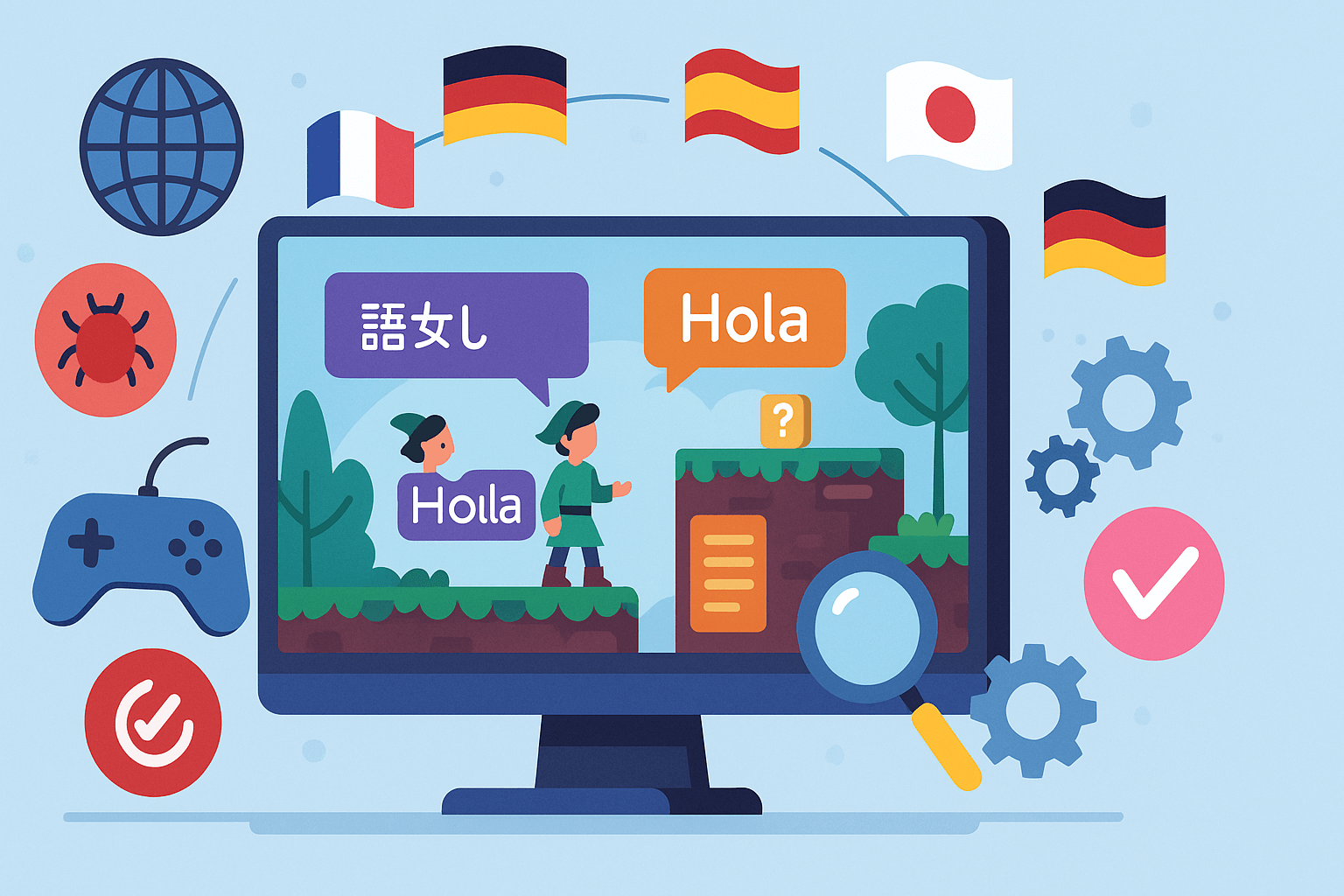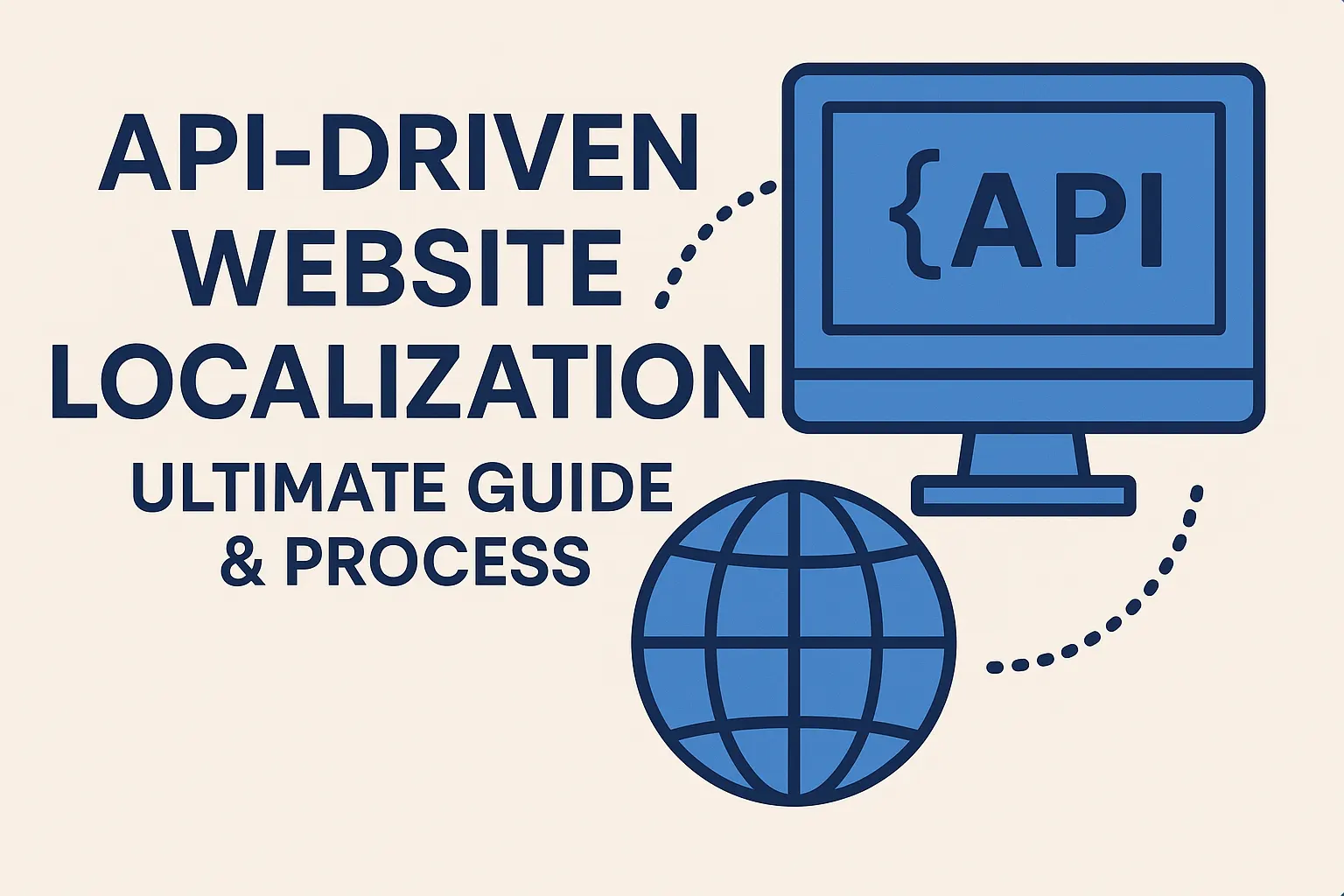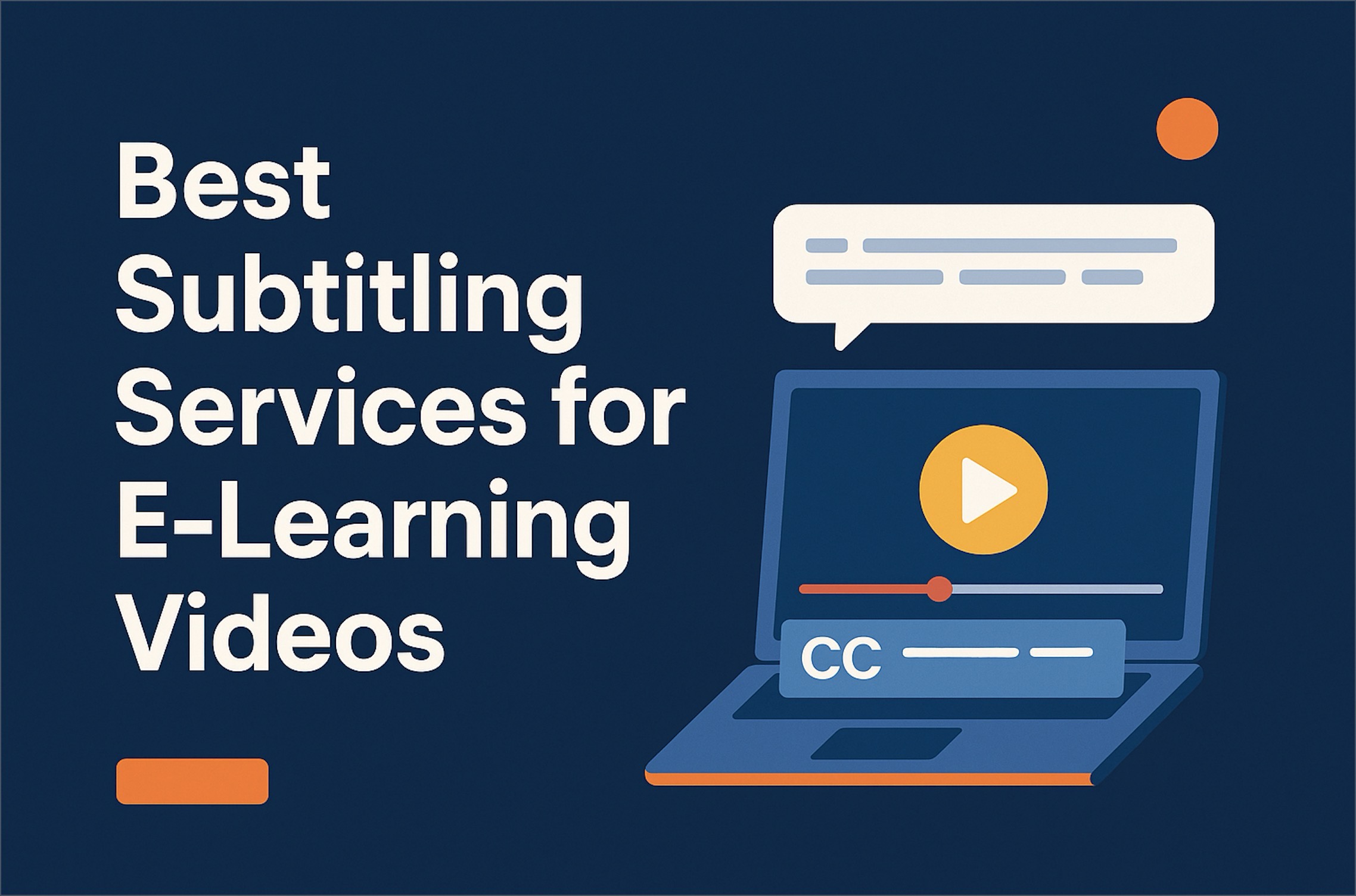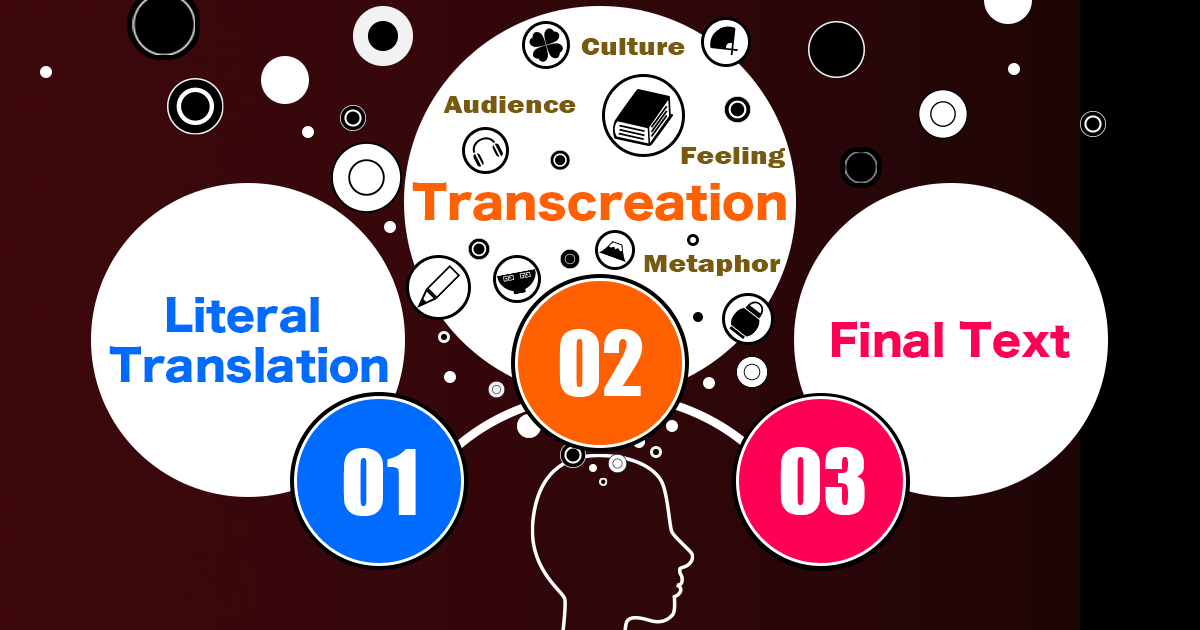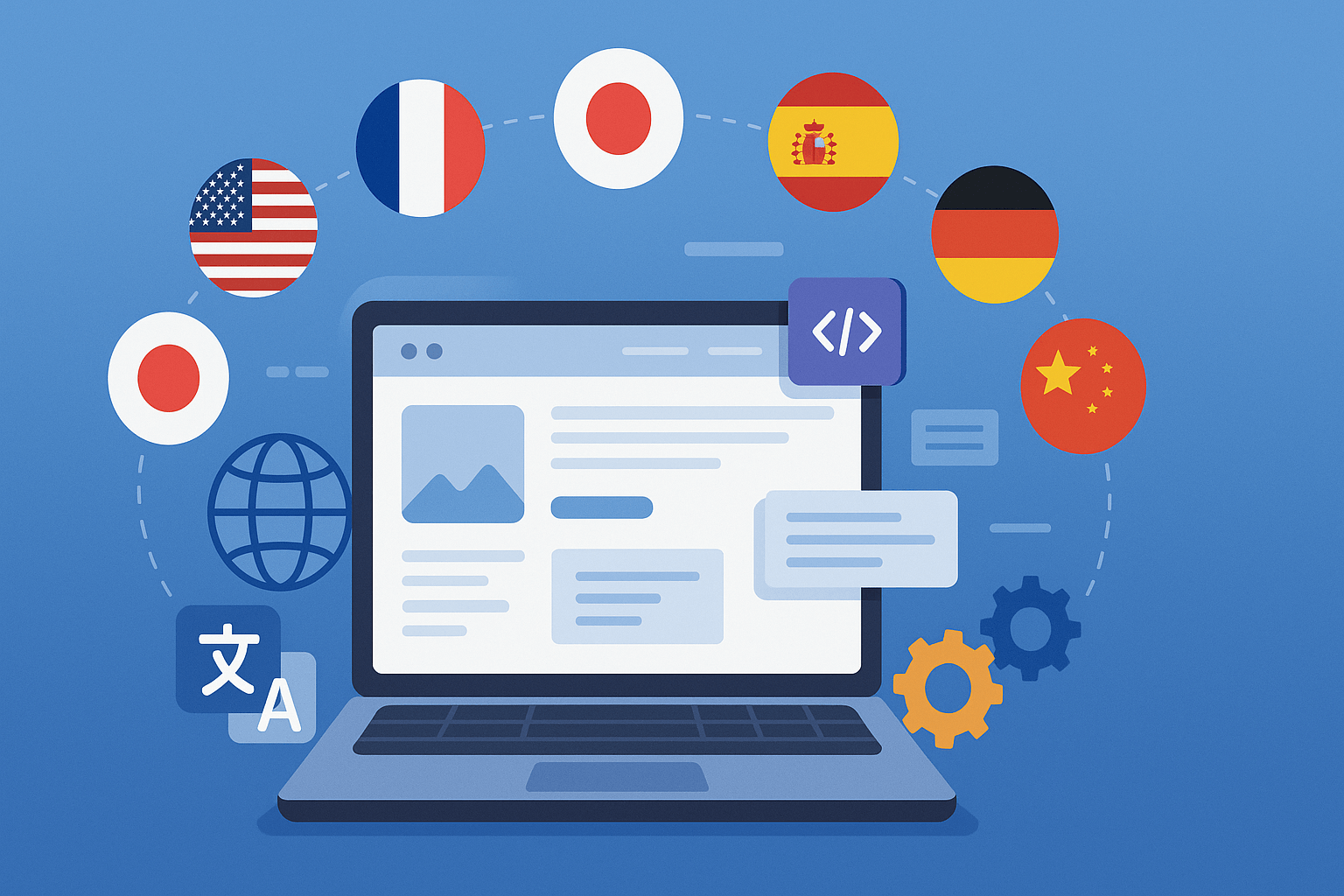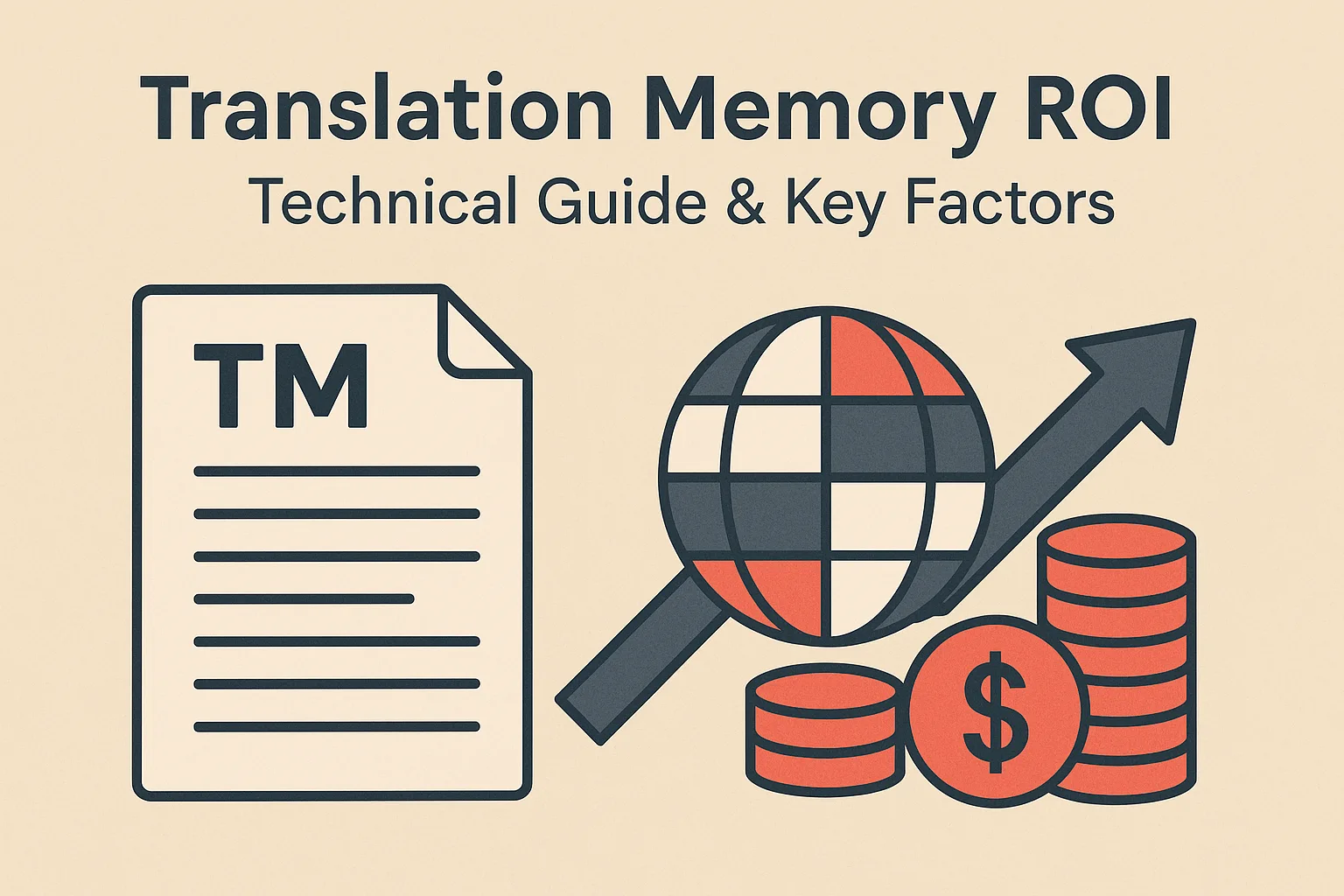Launching a game for multiple markets in 2025 demands more than just polished gameplay and functional QA.
Game Localization QA (LQA) is now a critical investment that ensures your titles feel native, immersive, and compliant for global audiences.
From linguistic accuracy to cultural adaptation and console certification readiness, LQA makes the difference between a smooth release and costly rejections or negative player reviews.
This guide outlines the best practices in game localization QA that leading studios, publishers, and game localization companies follow to guarantee overall market success.
What is Game Localization QA (LQA)?
Game Localization QA (LQA) is the final quality assurance step in the game localization pipeline.
It’s the stage where linguistic, cultural, and visual elements are tested inside the actual game environment to ensure that localized builds are accurate, immersive, and market-ready.
While translation ensures that words are converted from one language to another, LQA ensures that those words, along with UI, audio, and visual elements, integrate seamlessly into gameplay.
It’s the safeguard that prevents mistranslations, broken UI layouts, or culturally insensitive content from slipping into the release build.
Why LQA Matters for Global Games
- Player Immersion:
Gamers instantly notice if a button is cut off, a dialogue feels unnatural, or a subtitle is mistranslated. Poor LQA breaks immersion, reducing retention and reviews.
- Compliance & Ratings:
Many regions enforce strict guidelines (PEGI in Europe, ESRB in the US, CERO in Japan). If disclaimers, legal notices, or in-game warnings are mistranslated, games may be delayed or even rejected.
- Commercial ROI:
Even small localization errors, such as in-store descriptions or monetization menus, can directly reduce downloads, purchases, or DLC adoption.
Game Localization QA ensures your revenue streams stay protected.
- Brand Reputation:
A single mistranslated phrase can spark community backlash. This is especially true in sensitive genres like RPGs, where story and immersion are central.
Key Dimensions of LQA (Expanded)
- Linguistic Accuracy
Linguistic accuracy is crucial in the Game localization process. This is the 1st step in LQA. So, ensuring this step is flawless is key.
Here’s what to double-check:
- Grammar: e.g., spelling, punctuation, and terminology are flawless.
- Consistent terminology: e.g., “mana” vs. “energy” in the same RPG – this will confuse players.
- Contextual meaning: phrases or idioms must make sense in the target language and context.
- Tone and style: keep character dialogue, narration, and UI messages consistent with the original game’s voice.
- Numbers, dates, and currencies: ensure numeric values, time formats, and currencies match regional conventions.
- Text expansion/shrinkage: verify that longer translations don’t break UI elements or cause overlaps.
- Cultural sensitivity: check for content that might offend or confuse players in the target region.
- Style & Tone
Localization is about capturing the essence of the source materials; it’s about capturing the tone, voice, and personality of the game in a way that feels natural to the target audience.
Different languages have unique ways of conveying formality, humor, or emotion, so understanding these nuances is critical (e.g., Japanese).
Even small mismatches can break immersion or make characters feel inconsistent. So, LQA is not something enterprise buyers skimp out on, nor should you.
Here’s a checklist that covers the Style and Tone part perfectly:
- Consistency of tone: dialogue and narration should match the original game’s mood and character personalities.
- Formality levels: ensure that verb forms, pronouns, or stylistic markers reflect the intended level of respect or casualness.
- Character voice: each character should retain a distinctive, recognizable voice across all localized dialogue.
- Contextual appropriateness: humor, idioms, or cultural references should make sense in the target region without losing meaning.
- Immersion: every line of text, UI message, or in-game prompt should feel natural to the player, not like a literal translation.
- UI/UX Fit
Localized text doesn’t always fit neatly into the same space as the source language. Depending on the target market, strings can expand or contract dramatically.
For instance, German text often runs up to 30% longer than English, while Chinese tends to be shorter but more compact.
Without proper LQA, these variations can wreak havoc on the game’s visual presentation, leading to a bad overall gaming experience.
This could cause tanking reviews and end up as a costly mistake to fix.
This list will make sure you tick all the boxes when it comes to UI/UX fit during Game Localization QA:
- Text expansion/contraction: verify buttons, labels, and menus scale correctly in all target languages.
- Subtitles & captions: ensure no lines are cut off, overlapped, or too fast for players to read.
- Dynamic UI elements: test dropdowns, skill trees, or expandable menus (example, Russian skill names fitting in ability trees).
- Alignment & direction: confirm right-to-left (RTL) languages like Arabic or Hebrew display correctly.
- Font & readability: ensure fonts support special characters, diacritics, and scripts without distortion.
- Culturalization
It’s about making sure that symbols, gestures, imagery, and references are culturally appropriate for the target market.
What feels neutral in one region may be offensive or even prohibited in another. For instance, certain hand gestures or religious references that are harmless in Western games can be problematic in the Middle East.
Without cultural LQA, a game risks alienating players or being rejected entirely from distribution platforms in specific markets.
Here’s what to double-check in cultural LQA:
- Gestures & body language: confirm they don’t carry unintended meanings locally.
- Religious & political references: avoid content that could offend or break local laws.\
- Symbols & iconography: check for imagery (skulls, crosses, hand signs) that may be restricted.
- Violence & gore: ensure the visuals meet local standards.
- Localization of humor & references: adapt jokes, idioms, or cultural cues so they resonate with the audience.
- Platform compliance: verify that assets align with content rating systems and platform-specific rules.
- Visual Layout Checks
Visual layout checks ensure that text and design stay consistent and readable across different resolutions, screen sizes, and platforms. This step is critical because even well-translated content can fail if it doesn’t display properly in-game.
LQA also prevents subtle but immersion-breaking issues such as “widows” or “orphans” in subtitle formatting, where single words or characters are left isolated on screen. A polished layout reinforces immersion and accessibility for all players.
Here’s what to look for:
- Cross-platform consistency: verify layouts work across PC, console, and mobile resolutions.
- RTL script handling: ensure proper mirroring and alignment for languages like Arabic/Hebrew.
- Line breaks & spacing: prevent truncated text, overlapping labels, or awkward breaks.
- Subtitles formatting: avoid widows/orphans and confirm timing matches audio.
- Font rendering: check that fonts display diacritics, special characters, and non-Latin scripts correctly.
- UI adaptability: test that scaling works smoothly for different aspect ratios (example: ultrawide vs. mobile).
The LQA Workflow in Practice
Game Localization Quality Assurance (LQA) is a multilayered process, designed to catch issues at every stage of the game experience. Each step addresses a unique challenge, ensuring the final build feels seamless, accurate, and ready for global release.
Here’s what it looks like:
- In-Context Playthroughs
Linguists play the game as a player would, experiencing dialogue, UI, and menus in real time. This reveals issues that string-based translation reviews often miss.
This reveals problems that string-based translation reviews often miss, such as awkward phrasing in gameplay, broken context in cutscenes, or overlapping on-screen text.
- Screenshot Reviews
Screenshots are captured from various builds to highlight truncation, misaligned UI, and placeholder errors (e.g., “%PLAYERNAME% joined the quest”).
Visual reviews provide quick evidence for developers, making fixes faster and more precise.
- Defect Logging & Severity Tags
Errors are classified as:
-
-
- Critical: Blocks progress or violates compliance, e.g., wrong or missing age disclaimer.
-
- Minor: Cosmetic but noticeable, e.g., slight formatting issue.
-
- Regression Testing
After fixes, testers recheck the same content to ensure corrections didn’t break other strings.
This iterative process continues until the build is cleared for release.
What Happens Without LQA?
Risks associated with skipping proper Game Localization QA aren’t just cosmetic issues; they can be as severe as hurting your revenue to getting banned in certain parts of the world.
- Menus that don’t fit the text → frustrated players.
- Story mistranslations → loss of narrative integrity.
- Wrong terminology in tutorials → increased churn.
- Store copy errors → lower conversions and revenue.
- Compliance failures → delays in console approval.
Real-world example: Pokémon (early Spanish versions):
“The battle move Counter was mistranslated as “contador” (“counter” as in countdown clock), instead of the intended Contraataque. This literal translation caused confusion in understanding the move’s function. The error wasn’t corrected until the later X/Y releases.” [Source: traductoresproblematicos]
In short:
Game Localization QA ensures that your localized game is not just playable, but enjoyable and culturally appropriate.
It’s where translation meets immersion, and it’s what separates successful global launches from costly missteps.
How does LQA differ from functional QA and compliance checks?
Functional QA focuses on bugs, crashes, and gameplay logic, making sure the game runs as intended.
Compliance QA ensures the game meets platform standards, such as TRC, TCR, or Lotcheck requirements from platforms like Sony, Nintendo, or Microsoft.
LQA, on the other hand, targets language, cultural fit, and UI readability, ensuring that the localized version is immersive, accurate, and free of errors. Together, these QA layers guarantee a playable, compliant, and culturally polished game experience.
The table below sums it up perfectly:
| LQA | Functional QA | Compliance |
| Focuses on Language & Culture | Focuses on Gameplay Mechanics | Focuses on Platform Standards |
| Checks for Accuracy & Tone | Checks for Stability & Bugs | Checks for Certification Rules |
| Fixes issues like Mistranslations | Fixes issues like Crashes & Glitches | Fixes issues like Violations & Rejections |
| Performed by Linguists | Performed by Testers | Performed by Specialists |
Each layer is essential when developing and publishing a game. But the core significance of LQA is that it is the key to an experience that resonates with players worldwide.
The LQA Workflow: From Pre-Flight to Regression
A structured workflow reduces risk and accelerates approvals. Leading game localization services follow a three-phase LQA model:
Step 1: Pre-LQA Setup (Style Guides, Glossaries, Pseudo-Localization)
Before testing begins, alignment is critical:
- Glossaries & style guides define tone, terminology, and forbidden terms.
- Pseudo-localization injects diacritics, expands text length, and simulates RTL to detect layout issues before translation.
Example: “New Game” → “[ñëŵ Ğâmë!!!]” reveals truncation risks early.
Step 2: In-LQA Execution (Playthroughs, Screenshots, Severity Logs)
During playtesting, linguists and QA specialists:
- Run branch-based playthroughs to cover multiple storylines.
- Check screenshots for truncated menus, overlapping UI, or incorrect placeholders (e.g., “%s coins” not replaced).
- Validate tone, formality, and legal text (EULA, disclaimers).
- Apply severity levels (Critical → Major → Minor).
Deliverables: annotated screenshots, string IDs, and defect logs for development teams.
Step 3: Post-LQA (Triage, Fixes, Regression)
After issues are logged:
- Daily triage calls prioritize critical vs minor defects.
- Developers implement fixes, testers verify in regression cycles
- Release candidate sign-off happens once 0 critical issues remain.
Metrics to track:
- defect rate,
- turnaround time,
- first-pass yield.
Best Practices That Move the Needle
Design for Text Expansion & Placeholders
Languages like German or Russian expand by 20–30%. Placeholders (e.g., {playerName}) must render correctly across locales. Poor string concatenation leads to awkward results like:
- Wrong → “You have %s coins left.” → “You have Juan coins left.”
- Right → “Juan has 5 coins left.”
Handle Scripts & Fonts (CJK, Cyrillic, RTL)
- CJK (Chinese, Japanese, Korean) → verify line-breaking rules.
- Cyrillic → check kerning & glyph support.
- RTL (Arabic, Hebrew) → ensure UI mirroring and proper character shaping.
Culturalization & Age Ratings Ready
Cultural red flags vary by region:
- Hand gestures that might be offensive in some cultures.
- Certain religious or political symbols.
- Idioms that don’t translate (example: “hit the sack”).
LQA also checks store copy and in-game text for alignment with PEGI, ESRB, or CERO ratings.
Console Approvals: Bake in TRC/TCR Early
Platform certification failures cost time and money.
Embedding TRC/TCR pre-checks into LQA avoids last-minute delays due to rejections.
Measure Quality with MQM/DQF
Professional video game localization companies use MQM/DQF typologies to categorize and score errors:
- Accuracy: wrong meaning.
- Fluency: grammar/spelling.
- Terminology: inconsistent glossary.
- Locale: wrong formats.
- Style: tone mismatch.
This data-driven approach builds a feedback loop for continuous improvement.
Languages & Market Coverage: From FIGS to CJK/Arabic
Most studios localize first into FIGS/EFIGS (French, Italian, German, Spanish, English). For AAA titles, expanding to CJK (Chinese, Japanese, Korean) and Arabic delivers significant ROI.
- Japan (JA): Console-heavy, narrative-rich market.
- China (ZH): Mobile and PC dominance; strict content laws.
- Korea (KO): E-sports and MMO focus.
- Arabic (AR): Fast-growing mobile segment, requires RTL QA.
Tooling & Handoff: Vendor Expectations
Leading game localization agencies provide:
- TMS/CAT tools with in-context preview.
- Screenshot automation for efficient defect reporting.
- Git/Jira connectors for dev workflows.
- Secure portals with NDA & access control.
This ensures speed, confidentiality, and smoother dev-LQA collaboration.
AI + Human in LQA: Where It Fits (and Where It Doesn’t)
AI can help draft non-critical text (like help menus), but critical UI, lore, or store descriptions must remain human-only. AI’s role is supplementary, never a replacement, for LQA.
Why Choose Circle Translations for Game LQA?
Launching a game in global markets requires seamless localization QA that protects immersion, compliance, and player experience.
Circle Translations is trusted by B2B gaming partners because we combine linguistic expertise, technical precision, and scalable workflows to meet the unique needs of both indie developers and AAA publishers.
Here’s why studios choose us:
- 120+ Languages with Native Gaming Linguists
We cover all major launch sets (EFIGS, CJK, Arabic, LATAM, Nordic, and more) with linguists who are not just translators, but gamers themselves, ensuring terminology, style, and in-game tone feel natural to the target audience. - Dedicated Project Managers, 24/7 Availability
Our PMs are available around the clock to coordinate QA cycles, bug reports, and developer communication, so global teams can move fast, regardless of time zones. - Revisions Included in All Tiers
From Basic to Custom workflows, revisions, and defect reconciliation are included, ensuring builds reach a first-pass yield rate that minimizes rework.
- Secure Portals & NDA Protection
With GDPR-aligned handling, encrypted file transfers, and role-based access control, your unreleased builds remain fully secure during testing. - MQM/DQF Quality Models
Every defect logged is categorized using industry-standard frameworks, providing you with quantifiable quality metrics (accuracy, fluency, style, locale compliance).
- Platform Compliance Readiness (TRC/TCR/Lotcheck)
We align LQA with console certification requirements from Sony, Microsoft, and Nintendo — reducing the risk of costly submission rejections.
- Support for All File Types & Engines
From Unity/Unreal builds to JSON, XML, and subtitle (SRT) assets, we work directly with the formats and pipelines your devs already use.
- Scalable for Indie & AAA Studios
Whether you need a 2-language pilot for an indie release or multi-locale QA across 20+ markets, our workflows scale with your roadmap.
- Transparency & KPIs
We provide detailed defect logs, turnaround reports, and cost-per-locale metrics so your team always has visibility on ROI and release readiness.
- Optional Services to Reduce Risk
- Pseudo-localization testing: catch layout issues early.
- Store copy & marketing asset review: prevents embarrassing mistranslations in trailers or app stores.
- Continuous LQA support for live-ops and DLC updates.
With Circle Translations, you’re not just buying a service; you’re building a localization QA engine that protects your game’s reputation and maximizes its success in every market.
RFP Checklist for Game Localization QA Vendors
When vetting video game localization companies, ensure they provide:
- ISO 17100 certification.
- MQM/DQF error models.
- Linguist vetting (gaming SME experience).
- TRC/TCR readiness.
- Screenshot workflows & string ID support.
- Coverage for PC, Mobile, and Console platforms.
- SLA metrics & sample QA reports.
Conclusion: Raising the Bar in Game Localization QA
In 2025, video game localization QA is no longer optional. It’s the safeguard that ensures your game feels authentic, passes platform checks, and delights global audiences.
By following best practices, from pseudo-localization and cultural QA to MQM/DQF scoring and TRC pre-checks, studios can cut rework costs, accelerate launches, and maximize ROI.
Circle Translations provides a complete game localization service, blending linguistic expertise, cultural insight, and technical QA. With secure workflows, dedicated PMs, and global language coverage, we help you ship games that truly resonate worldwide.
Frequently Asked Questions:
What exactly is LQA in games?
Game Localization QA (LQA) is the final testing stage that validates linguistic accuracy, cultural fit, and UI/UX quality in localized builds to ensure immersion and market readiness.
How is LQA different from TRC/TCR?
TRC/TCR are platform compliance checklists for console approval, while LQA focuses on language, style, and cultural adaptation to guarantee a seamless player experience.
Do we need pseudo-localization?
Yes. Pseudo-localization simulates translation early to detect text expansion, encoding, and layout issues before full localization, saving time and QA costs.
Which languages should we prioritize?
Most studios start with EFIGS (English, French, Italian, German, Spanish) and expand to CJK (Chinese, Japanese, Korean) and Arabic based on revenue data and audience demand.
How do you measure LQA quality?
LQA uses MQM/DQF frameworks to log and classify errors by accuracy, terminology, fluency, and severity, giving measurable KPIs for continuous quality improvement.
Can AI help?
AI can assist with non-critical string drafts, but human linguists must review and own critical UI, lore, and age-rated content to maintain quality and compliance.
What deliverables do we receive?
A full LQA handoff includes
- defect logs
- annotated screenshots
- updated glossaries
- bilingual files
- Release recommendation (for publishers and platform submission).





